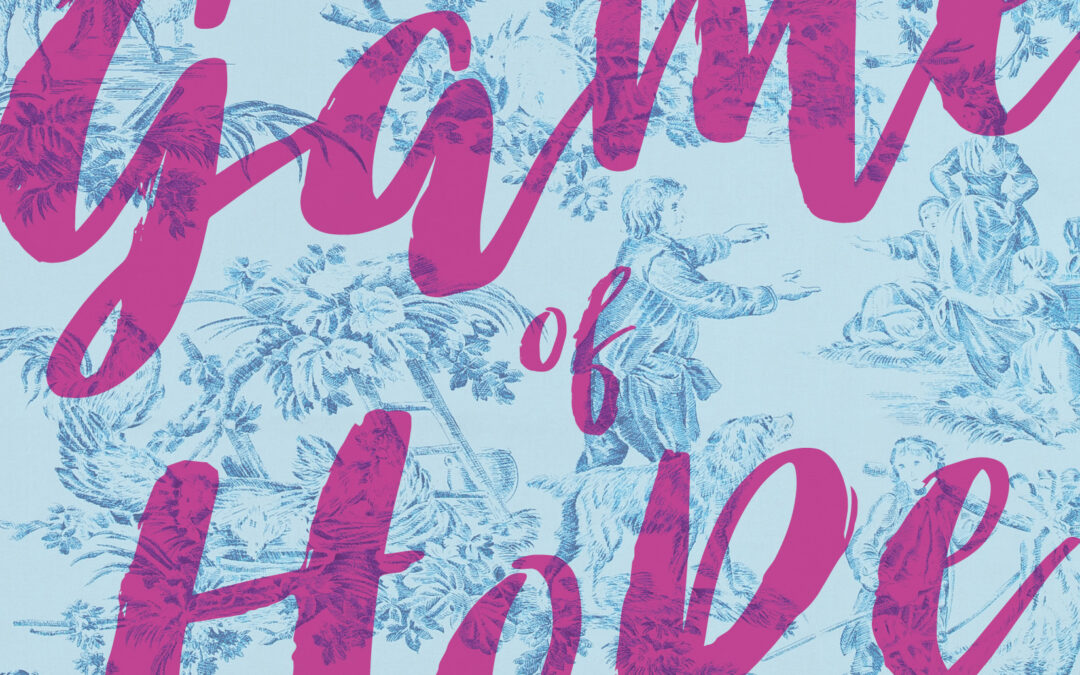
by Sandra Gulland | Sep 23, 2019 | Adventures of a Writing Life, On Research, The Game of Hope |
I’m pleased to announce the beautiful Canadian paperback edition of The Game of Hope. It’s fresh and fun to have a new cover. The first person to email me* a selfie holding the book will be sent an autographed hardcover edition.
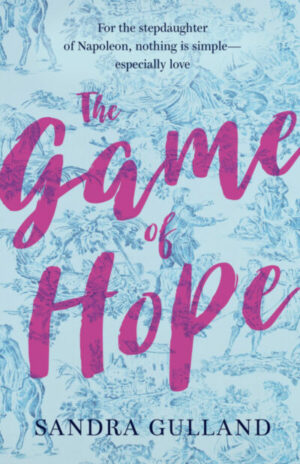
In other news, I’ve just returned from a three-week trip to the UK, researching the early life of Queen Elizabeth I and the village of Adisham, where I’ve set my other heroine, young Molly the falconer.
Researching falconry at The Hawking Centre was a highlight of my trip.
In one month, shortly after Canadian Thanksgiving, Richard and I will be heading south to San Miguel de Allende for the winter. Once settled, I plan to NaNoWriMo-write the rough first draft of Molly & Bess (working title). I’m not yet sure if it’s one novel or two. This will be one way to find out.
*sgulland AT sandragulland DOT com
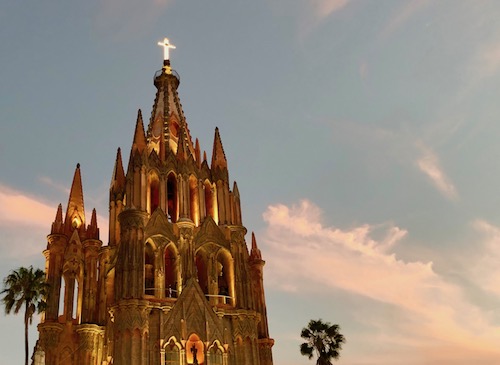
by Sandra Gulland | Apr 14, 2019 | Adventures of a Writing Life, Promotion, The Shadow Queen, The Writing Process, Work in Process (WIP) |
Where have I been?
When we arrived in San Miguel de Allende (Mexico) over five months ago, I went on a blogging spree. I was inspired, in part, by the refreshing wonder of fast internet. A month later, I stopped writing blog posts, getting down to the business of writing the keynote speech I was to give at the San Miguel Writers’ Conference mid-February.
As well, The Shadow Queen had been chosen as the Conference’s “Big Read” and an event was organized presenting it to book clubs. The event ended up including a video interview of me on writing The Shadow Queen, two lively short lectures by experts on the historical period, and a dramatic performance from the novel—plus champagne and authentic French beignets.
Being an all-or-nothing sort of person, I got very involved in scripting the film, which you can see here. Denis Lanson, the film-maker, did a wonderful job.
The short dramatic performance was my suggestion (in lieu of a reading). I discovered that it was quite a challenge to write. Wonderful actor friends Marilyn Bullivant and Rick Davey performed it. We went through several rehearsals (necessitating rewrites) together with Karen Kinney, head of the committee (a creative committee from heaven, IMO).
In short, a good part of December, January and early February was entirely taken up with writing the keynote, preparing readings for several Conference panels, and scripting the film interview and dramatic presentation of The Shadow Queen. All very exciting!

On stage before my keynote.
The Conference went wonderfully well. I still glow thinking of the reception to my keynote—a standing ovation from an audience of about five hundred—this in addition to the thrill of so many people reading The Shadow Queen. It was a highlight of my life as a writer.
In the weeks that followed, I struggled to get back to work on the WIP, an increasingly curious little novel about a young falconer in Elizabethan England. I went through all the stages of the writing process, including the requisite, “This is garbage, I should just retire” phase. (“What! You’re on Chapter Four already?” one writer’s husband would say whenever she voiced that thought.)
I made a self-appointed deadline mid-April to deliver an outline and character “bible” to Allison McCabe, the wonderful editor of historical fiction who worked with me on The Game of Hope. I delivered it Saturday morning, then celebrated with a lunch margarita at Casa Blanca, one of our favourite restaurants in San Miguel this year.
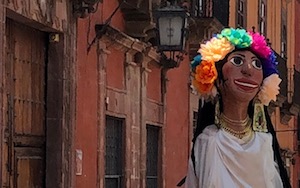
The working title of the WIP is now Raptor Wild, which I rather like. The “outline” is a mix of bare-bone scenes (mostly dialogue) and narrative plot points, weighing in at a hefty 14,392 words. The character “bible” is simply a page or two on each of the thirteen main characters, including a gyrfalcon and an elderly English Water Spaniel. A significant number of the characters die or are killed off rather early on in the story—somewhat too grim for a YA, I suspect.
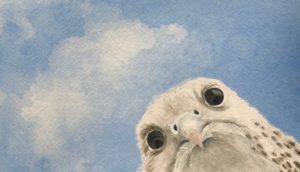
“Beauty,” one of the WIP characters.
Although this was only an outline, I developed all the usual symptoms of being in final draft mode. Invariably, at that stage, I become obsessed. I get little sleep, cancel all activities that are not work-related, and become convinced I have a fatal illness. That’s when I think: Ah, almost there. How wonderful to send files off and experience a miraculous cure!

Now that Raptor Wild has been wrapped up (for now), it’s time to prepare to leave San Miguel—never easy. I love getting back home to Canada, but I hate leaving Mexico, too. We’ve had a wonderful winter here this year.
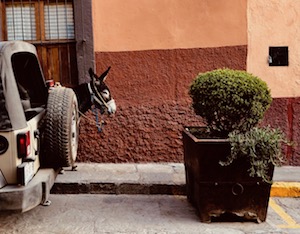
Next up, the paperback release of The Game of Hope, all gussied up in a beautiful new cover!
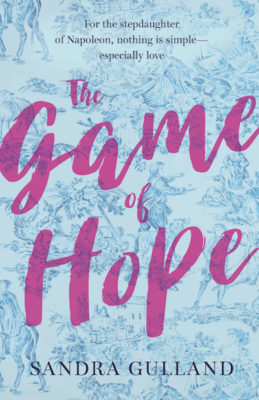

by Sandra Gulland | May 21, 2018 | Adventures of a Writing Life, Audible Editions, Promotion, The Game of Hope, Young Adult Literature |
I’m writing this in Toronto, a long way from home. Tomorrow I have a full schedule of two interviews, a book store signing, and then, in the evening, a book launch of The Game of Hope.
I sent off the final corrections to The Game of Hope last October, and since then I’ve been researching and outlining my next YA novel about a young falconer in Elizabethan England. There are no raptors in The Game of Hope, so I thought it time to reacquaint myself fully with Hortense’s world before having to answer questions about it.
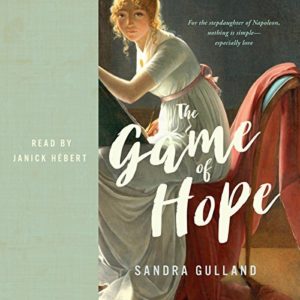
Fortunately, I was able to download the audio edition of The Game of Hope this morning, and on the long drive down to Toronto today, I listened to it. And was charmed! Say hey! I think it’s quite a good story, and the narration by Janick Hebert is simply delightful.
Canadians can now get the audio edition of The Game of Hope on Audible, Kobo, Google Play or on Overdrive through your public library. On June 23, it will be available in the US.
I sincerely recommend it!
Anyone else out there still warmed by the glow of Harry and Megan? I have been!
This is my favorite photo of the pair in the open carriage. (It was snapped by Yui Mok, a photographer based in the UK, as their carriage went under an overpass.)
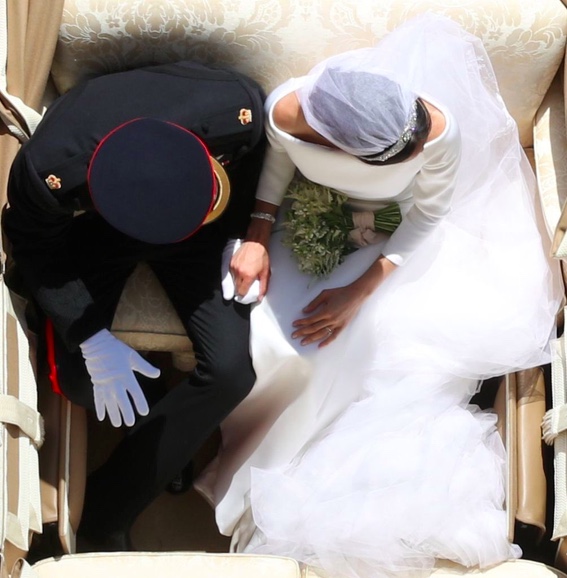
I initially intended to write this blog about an interesting article about writing historical fiction. However, “The Tourist, the Expat and the Native: A Traveler’s Approach to Crafting Historical Fiction,” by Mary Volmer deserves more than a passing reference. More on that anon…
For now, Hortense is about to meet the man she loves, and — frankly! — I’m curious to hear what happens!
Toronto photo by Sidra Saeed on Unsplash.
SaveSave
SaveSave
SaveSave
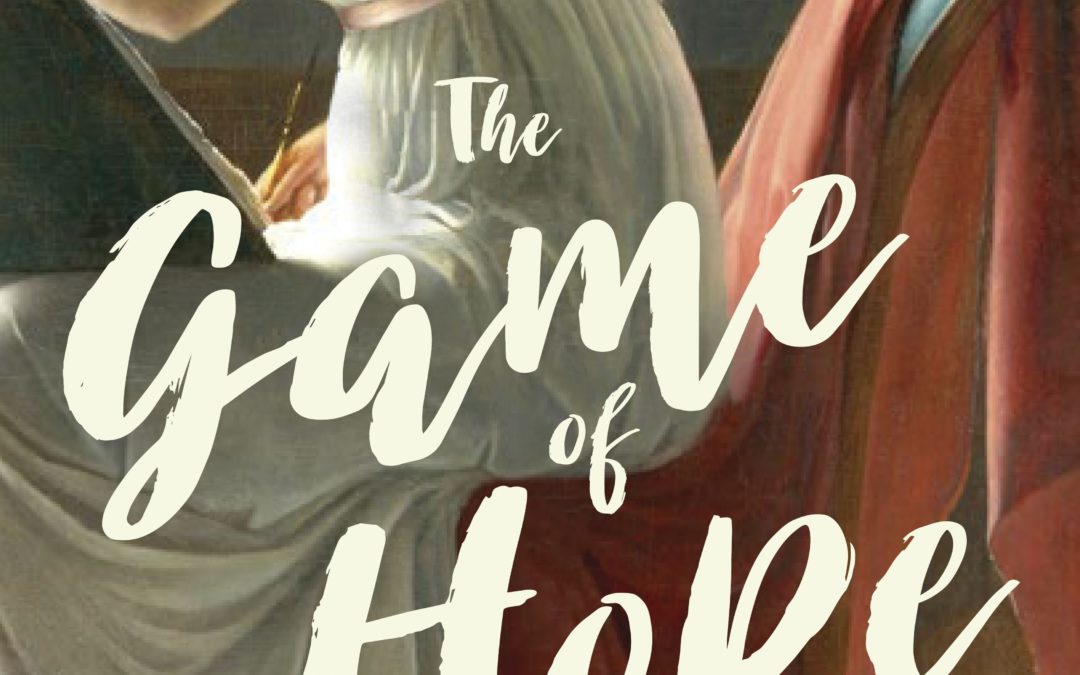
by Sandra Gulland | Mar 30, 2018 | Resources for Book Clubs, Resources for Readers, The Game of Hope, Young Adult Literature |
The painting on the cover of The Game of Hope is by French artist Marie-Denise Villers. It is popularly known as “Young Woman Drawing,” and can be seen in the Metropolitan Museum of Art in New York City. The portrait is said to be of Marie Joséphine Charlotte du Val d’Ognes, but at least one art historian believes that it’s the artist’s self-portrait.
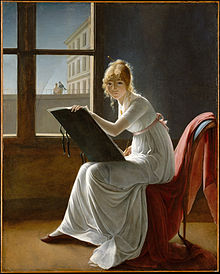
The painting was unsigned and for years it was attributed to the famous French artist Jaques Luis David. It wasn’t until 1995 that Villers was credited for the work.
Although the painting is not a portrait of Hortense de Beauharnais, the young woman looks rather like her, I think, especially in spirit. Here is a portrait — possibly a self-portrait — of Hortense as a teen.
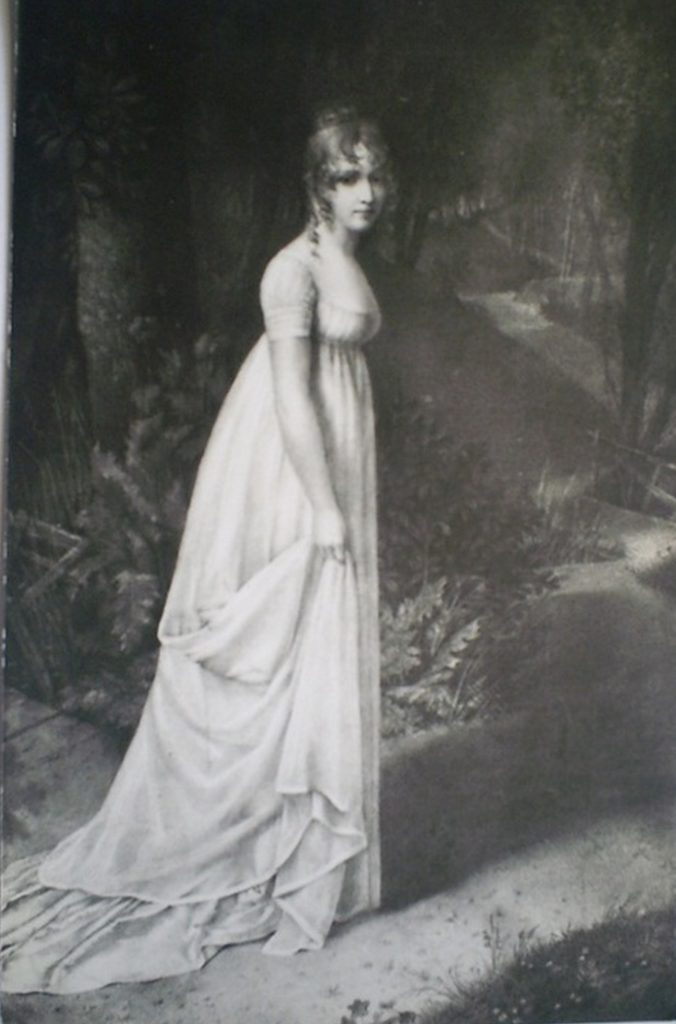
Hortense (possibly a self-portrait).
For portraits of Hortense at all ages, go to my Pinterest board.
For more on this intriguing painting, read “Prof. Anne Higonnet reveals a new twist in storied Metropolitan Museum of Art painting.” Higonnet’s slide presentation on this painting — “White Dress, Broken Glass” — can be seen online, although without the accompanying text it’s difficult to surmise her conclusion.
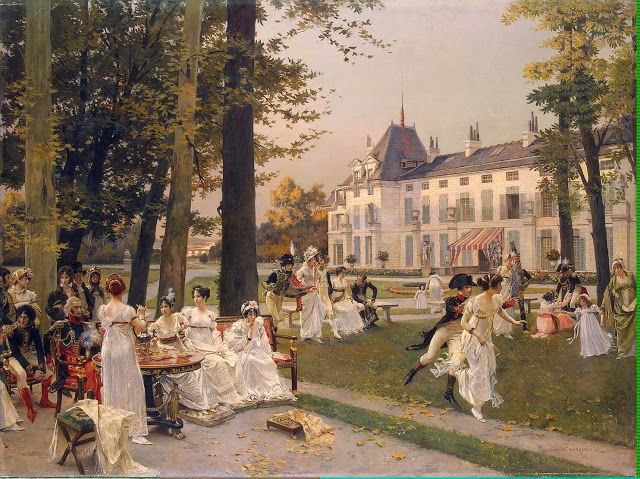
by Sandra Gulland | Mar 30, 2018 | Resources for Book Clubs, Resources for Readers, The Game of Hope |
Prisoner’s Base is a very old running game that was popular at Malmaison, and continues to be played today, although likely called by a different name. We don’t know which exact rules were played at Malmaison, but here is one version:
Divide an even-numbered group in half to make teams. As few as ten can play, but if the area is very large (i.e. a football field), as many as one hundred can participate.
With sticks or chalk or a line in the dirt, make a line between the two teams. About ten to fifteen paces in back of each team outline a square. These will be the “prisons.”
Each team picks one person to be held in the opposite team’s prison. This is usually someone who can run very fast and is why, in The Game of Hope, Eugène says that Hortense is always chosen.
Once the play begins, each team chooses someone to rescue their imprisoned team member and to bring him or her back without being “caught” (tagged, that is).
If that person makes it to the prison without being tagged, then the goal is to wait and chose a moment for both to try to run back to their team’s side without getting “recaptured.
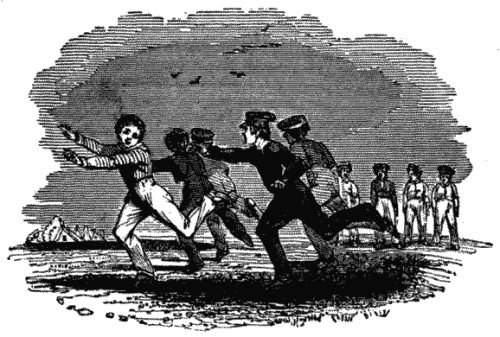
If, however, the person does get caught, then he or she also becomes a prisoner in need of rescue.
At the end of a set time, the team with the most prisoners wins. An alternative rule is to play until one team has captured all the opposing team’s members.
For more information on Prisoner’s Base and other historical running games:
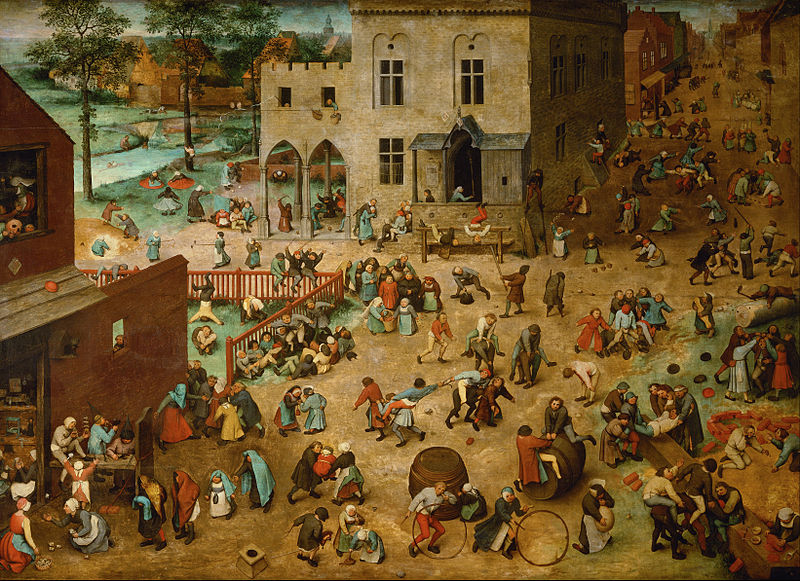
Children’s Games 1560 by Bruegel the Elder



















